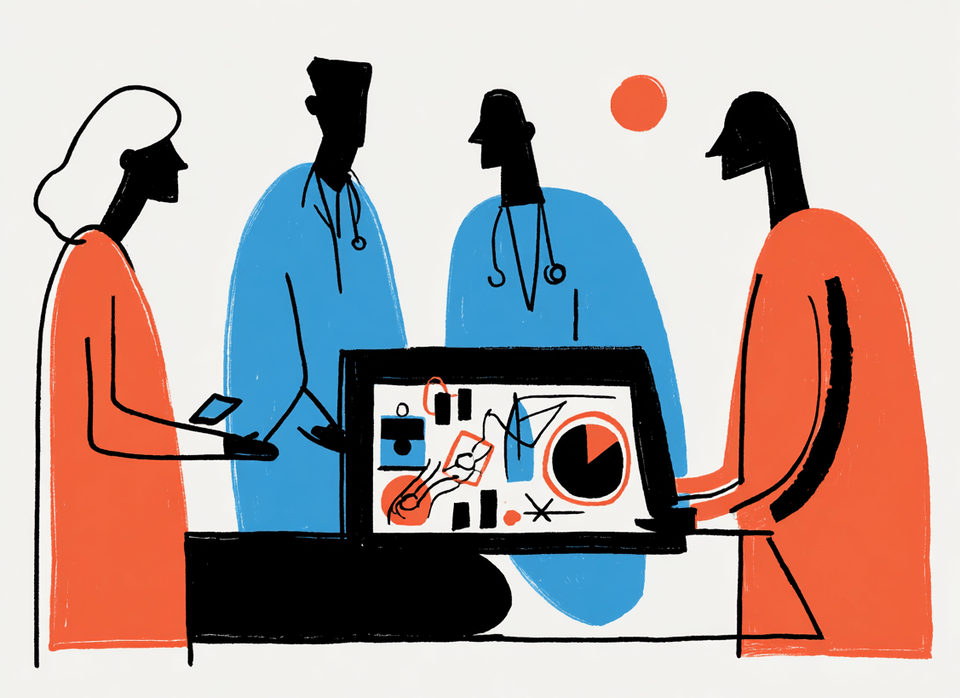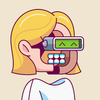Simulation UX: Designing for Learning and Pressure Testing
Learn how simulation-based experiences shape training in aviation, medicine, and cybersecurity. This article explores how safe, repeatable environments help learners practice critical tasks, manage stress, and transfer skills effectively to the real world.

Simulation‑based experiences now underpin training and decision‑making in many high‑risk fields. Airlines would never let a novice pilot learn a complex maneuver in an airliner, surgical residents hone their skills on manikins before touching a patient, and national cyber defenders test their playbooks on isolated cyber ranges.
While the technologies differ, all of these experiences share a common goal: they let people practise critical tasks in a safe, repeatable environment and pressure‑test their responses under realistic constraints. The design of the simulation user experience determines how effectively learners acquire skills, manage stress and transfer what they learn back to the real world.
Why simulation works
Simulation is more than technology; it is a technique that replaces or amplifies real experiences with guided practice. A review of simulation‑based learning notes that realistic scenarios allow repeated practice until mastery and are widely applied in aviation, the military, healthcare and other disciplines. In healthcare, simulation has grown from early manikins in the 1960s to sophisticated high‑fidelity manikins, standardized patients and VR/AR environments. Across studies, simulation improves learners’ knowledge, skills and attitudes while protecting patients and fostering a culture of safety. Meta‑analyses show learners trained with simulation often outperform those using traditional approaches.
The benefits extend beyond healthcare. Airlines adopted full‑flight simulators in the 1960s because airborne training was expensive and dangerous; high‑fidelity simulators allow recurrent practice and cost less than actual flying. Business wargaming uses role‑playing to simulate real‑world competitive scenarios, enabling companies to test strategies, identify strengths and weaknesses and build cross‑functional teamwork.

Cyber ranges simulate networks and user activity so defenders can practise detecting and responding to attacks without risking live systems. These controlled environments provide psychological safety, learners can make mistakes, repeat scenarios, and receive feedback without harming actual systems or people.
Research also shows simulation can inoculate teams against stress. A hyper‑realistic surgical training program that used a human‑worn “Cut Suit” and battlefield special effects improved resuscitation times, reduced critical errors, raised test scores, and increased participants’ leadership and communication ratings. This study described hyper‑realistic simulation as replicating battlefield conditions so participants “suspend disbelief,” become immersed, and develop resilience.
Pressure testing beyond practice
Simulation is not only for novices; it also pressure tests strategies, coordination and human performance under stress.
- Business wargaming. Companies run structured war‑game workshops where cross‑functional teams role‑play competitors. These exercises let firms pressure‑test product launches, market entries or crisis responses in a low‑risk environment. Benefits include anticipating competitor moves, testing strategies before implementation, improving agility and mitigating risks.
- Cyber ranges. A cyber range is an isolated environment replicating networks, systems, and user activity. Participants practise incident response, penetration testing, and vulnerability remediation. The environment includes learning management and orchestration layers that translate instructor‑defined attacks into the simulated infrastructure. Because no live systems are at risk, teams can test new tools and collaborate on complex scenarios. Drivers for cyber ranges include the growing cyber‑skills gap, rising attack frequency, and the need for realistic, team‑based training.
- Emergency services. Air medical and search‑and‑rescue teams run hoist operations and mission‑specific scenarios with manikins and live models to practise de‑escalation and stress management. On‑site simulation towers allow crews to rehearse tasks like hoisting patients repeatedly and reduce stress during real missions.
- Astronaut training. NASA uses underwater environments to simulate weightlessness and isolation. Underwater conditions allow the agency to test equipment and prepare crews for missions beyond Earth. The Neutral Buoyancy Simulator at Marshall Space Flight Center was an early water‑tank facility; it was superseded by the Neutral Buoyancy Laboratory (NBL) in Houston in 1997. At 62 m long, 31 m wide, and 12 m deep, the NBL can submerge mock‑ups of the space shuttle cargo bay or International Space Station. Astronauts typically spend about ten hours training underwater for each hour of planned spacewalk. NASA’s Extreme Environment Mission Operations (NEEMO) program saturates crews in an underwater habitat off Key Largo to practise living and working in confined spaces; 23 missions between 2001 and 2019 focused on EVA techniques, equipment development, and human performance under pressure.
Designing effective simulation experiences
Start with needs and objectives
High‑quality simulation does not happen by accident; it follows rigorous design principles. The Healthcare Simulation Standards of Best Practice (HSSOBP) developed by the International Nursing Association for Clinical Simulation and Learning, provides a useful framework. These guidelines apply broadly across domains because they emphasise clear objectives, learner‑centred design, and psychological safety.
- Conduct a needs assessment. Designers should analyse gaps in knowledge, skills and systems before developing a simulation. This assessment might include surveys, root‑cause analyses, organisational goals and regulatory requirements. The results guide overarching goals and ensure the simulation addresses real problems.
- Define measurable learning objectives. Objectives are the blueprint for simulation design; they guide tool selection, scenario development and evaluation. Objectives should cover cognitive (knowledge), psychomotor (skills) and affective (attitudes) domains. Align them with Bloom’s Revised Taxonomy (from remembering to creating) and write them using S.M.A.R.T. criteria—specific, measurable, achievable, realistic and time‑bound. Without clear objectives, evaluation becomes ambiguous and learning may suffer.
- Choose appropriate modality and fidelity. The design should align the simulation modality—manikin‑based, virtual, computer‑assisted or hybrid—with the objectives and learners’ level. Fidelity is not just technological; it has physical, conceptual and psychological dimensions. Physical fidelity refers to how accurately the environment mirrors reality (e.g., equipment, manikins, lighting), conceptual fidelity ensures the scenario elements are coherent (vital signs match the diagnosis) and psychological fidelity introduces contextual cues such as noise, time pressure and team interactions. Designers should select the level of fidelity based on learner level, objectives and available resources; high technology is not always required.
- Script and structure the scenario. A scenario should include a backstory, starting point, structured activities, and an endpoint. A scripted scenario ensures consistency and repeatability. Cues (verbal, visual or data) can guide learners back on track when they stray from the objectives. Provide enough time for participants to achieve objectives and avoid rushing; the schedule itself is part of the design.
- Maintain psychological safety and manage cognitive load. Learners should know the simulation’s broad objectives and feel safe to make mistakes. Scaffold objectives and complexity to align with learners’ readiness, reducing cognitive load and promoting retention. Vygotsky’s zone of proximal development—advancing learners step‑by‑step—helps them move from assisted to independent performance.
- Prepare and train simulationists. Designers and facilitators need formal or informal training in simulation pedagogy, ethics, and debriefing. Joining professional organisations, mentoring, attending workshops, and pursuing certification build competence and ensure ethical practice.
Facilitation and debriefing
Simulation sessions should be accompanied by structured pre‑briefing and debriefing. Pre‑briefing outlines expectations, roles and safe learning norms; debriefing allows learners to reflect, analyse performance and connect lessons to practice. Research shows that individualized feedback, cognitive interactivity and deliberate practice improve learning. The debrief should be learner‑centred, supportive, and focused on the objectives; it transforms experience into lasting knowledge.
Emerging technologies and AI
Simulation is evolving with artificial intelligence (AI) and extended reality. A 2024 review notes that AI and VR/AR will enable personalised learning, adaptive difficulty, and real‑time feedback, making simulation more immersive and flexible. AI can generate case scenarios, recognise learner behaviours, and offer tailored coaching. VR and AR extend simulation beyond physical labs, allowing teams to practise remotely or in augmented environments.
Several platforms already exploit these technologies. For example, there are AI interview practice tools that mimic medical school admissions interviews. A typical tool will keep time, ask follow‑up questions and generate detailed feedback based on how well the applicant addresses competencies. Some services even prepare applicants for school‑specific interviews. A student can select a specific programme, say the LECOM AI interview simulation, and the system will replicate that school’s timing, follow‑up prompts and question types. It then delivers detailed feedback, tracks progress across competencies and adapts its prompts to fit the chosen programme, so candidates can rehearse every question type in a realistic environment. Similar AI‑driven tools are emerging for surgical training, customer service and teacher education, offering scalable practice without the need for specialised facilities. Designers should consider how AI can augment rather than replace human facilitation and ensure transparency and fairness in algorithmic feedback.
Cross‑industry examples
Simulation’s versatility is evident across many domains, and each field adapts the UX to its specific pressures and learning goals.
Aviation
High‑fidelity flight simulators and part‑task trainers let pilots practise normal and emergency procedures safely and at far lower cost than actual flight hours. Realism is critical; the cockpit environment, instrumentation, and motion cues must match the aircraft, and regulators set standards for fidelity. Debriefing after each session reinforces learning and identifies performance gaps.
Healthcare
Healthcare education uses manikin‑based simulations, standardized patients and virtual reality to allow repeated practice without risking patients and to improve skills and patient outcomes. Hyper‑realistic simulations using cut suits and special effects can improve stress resilience. Designers must maintain psychological safety, set clear learning objectives and vary fidelity (physical, conceptual, psychological) to keep learners engaged.
Emergency services
Helicopter emergency medical crews use hands‑on hoist operations and mission‑specific scenarios to practice tasks such as patient extraction and to manage stress. Training towers allow repetitive practice, and modules on stress management teach de‑escalation techniques. Realistic terrain, weather, and patient profiles and team training build communication and manage workload stress.
Astronautics
NASA trains astronauts underwater in neutral buoyancy to replicate weightlessness, isolation and limited resources. The Neutral Buoyancy Laboratory submerges mock‑ups of spacecraft modules, and astronauts log about ten hours of underwater training per hour of planned spacewalk. The NEEMO program immersed crews in underwater habitats to test extravehicular activity techniques, develop equipment and evaluate human performance. Fidelity focuses on accurate physics, communication delays and psychological resilience.
Business
Business wargames allow companies to role‑play competitors to test strategies, identify blind spots and foster cross‑department collaboration. By simulating market moves, firms can anticipate competitor actions, improve agility and mitigate risks. Scenarios should be grounded in real data, involve diverse teams and include debrief sessions to translate insights into actionable strategies.
Cybersecurity
Cyber ranges simulate networks and user activity to enable live‑fire drills, penetration tests and team‑based competitions. These ranges provide a safe environment to test new tools and collaborate without risking live systems. Realism comes from accurate network topologies and orchestration layers that translate attack parameters into the simulated infrastructure. Feedback and scoring help participants track progress, and scenarios range from basic labs to complex enterprise networks.
Final thoughts
Simulation UX sits at the intersection of design, education and human factors. When done well, simulation offers a safe space to practise high‑stakes skills, inoculate teams against stress and pressure test strategies. The principles are consistent across industries: conduct a needs assessment, set clear objectives, align modality and fidelity with goals, script realistic scenarios, maintain psychological safety and debrief thoughtfully.
As AI, VR and other technologies mature, simulation will become more personalised, adaptive and accessible. Whether preparing pilots for turbulence, surgeons for unexpected bleeding, founders for competitive showdowns or students for a medical school interview, thoughtfully designed simulation experiences help people learn, adapt and thrive under pressure.

